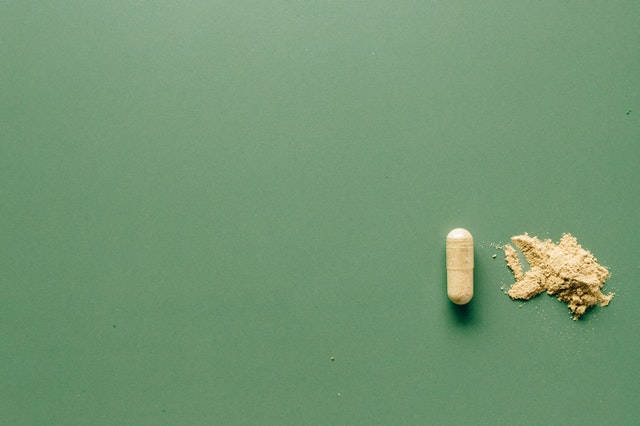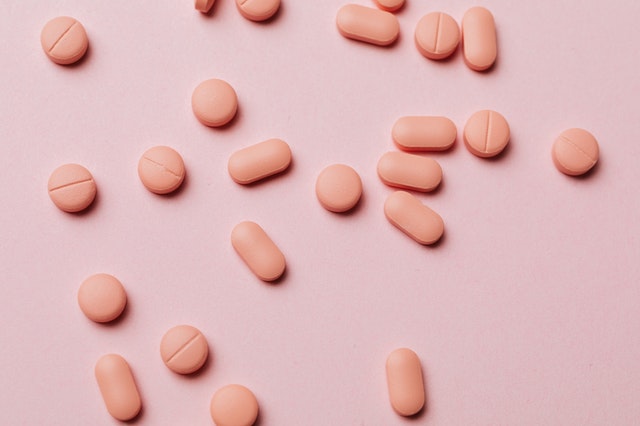General information of PTCB laws and regulations
Within the total of 4 knowledge areas included in the PTCB® exam, questions around laws and regulations involve only about 12.5% of the whole test, but it is recommended for you to equip yourself with enough knowledge about this material. Visit our blog the Comprehensive Study Guide on PTCB for more information
Within the previous version of the PTCB®, these concepts were found in questions within the area of Laws and Regulations as well as “Sterile and Non-Sterile Compounding”. There don’t appear to be any extra concepts surveyed on the unused test that was not shown on the previous version of the PTCB®.

Handling and disposal of pharmacy substances and waste
It is recommended for extraordinary caution to continuously be utilized when dealing with or arranging perilous fabric. When close or in contact with any of these sorts of materials, you would like to use personal defensive wear as laid out within the SDS (short for Safety Data Sheet) for that particular item.
- Hazardous materials
It is possible that hazardous materials are characterized as any chemical or medicate that postures potential harm to the individual planning or coming in contact with it. The OSHA (which stands for the Occupational Safety and Health Administration) has measures to secure representatives who work with dangerous materials. This contains legitimate individual defensive gear and suitable methods for managing diverse sorts of hazardous substances.
Regularly, producers of such items send composed documentation, known as SDS (short for Safety Data Sheet), that layout is suitable dealing with capacity prerequisites, and cleanup methods for the perilous item. Dangerous materials and chemicals ought to be put away independently from other materials. Numerous times, they can be put away in a negative weight room where they will afterward be taken care of. This sort of fabric moreover should be stored in a leakproof holder that’s labeled as “hazardous medication waste” until it is arranged securely.
In case of inadvertent introduction, you ought to be mindful of the gear accessible in your work environment to emergently offer assistance to minimize introduction and harm. This seems to incorporate an eyewash station, shower, or other rising cleaning components. Let’s follow the enlightening on the SDS for the particular item you’re working with. Also, you need to follow all information for cleanup of the unsafe materials, counting the utilize of particular spill packs that permit you to securely clean up the product. It is additionally imperative to report any occurrences to your direct supervisor.
- Non-Hazardous materials
It is recommended for the non-hazardous materials to be taken care of and arranged within the redress way, indeed in spite of the fact that they may not pose potential harm to the individual. Despite the fact that PPE isn’t required, these materials need to be dealt with with care. Non-hazardous squander may not pose a hazard of potential harm to the person but may pose a hazard to the environment in case not arranged securely.
These materials have the risk to lead to the hurt in case dumped down the deplete, which definitely may conclude up in our conduits. Depending on the material, they will end in a landfill or be devastated by burning. It is also possible that non-hazardous waste is extended from materials utilized to plan a compounded item to items over the expiration date.
- Pharmaceutical substances
A pharmaceutical substance is any substance utilized for providing benefits during the process of treatment. To rearrange it, pharmaceutical substances are medicines or the fixings utilized to create them. Pharmaceuticals like warfarin, tretinoin, finasteride, and methotrexate drop beneath the unsafe pharmaceutical substance list. Lapsed pharmaceutical substances can be sent back to the producer for turnaround conveyance. Antibodies, syringes, and needles must be arranged in a sharps holder for avoiding a needle stick.
Controlled substances
Controlled substances are considered medicines that carry a high risk of manhandling as well as abuse. These medications are profoundly directed by the DEA and are categorized into plans based on their level of potential manhandle and abuse. Each drug store contains an assigned region, such as a vault or cabinet, where certain controlled medicines are isolated to preserve the precise stock and then decrease the risk of redirection.
- Movement
The significant movement of controlled substances from the producer to the pharmacy before moving from the pharmacy to the patient is exceedingly controlled in a strict way by the DEA. Each step within the life cycle of a controlled substance must be traceable to guarantee appropriate dealing with and minimize any potential for redirection or untrustworthy actions.
- New Prescriptions
It is obligatory for the schedule II prescriptions to be sent electronically from the professional to the drug store or manually written on a secure medicine clear in case the professional incorporates a waiver on record (subordinate on the ward). Faxes are just acceptable for hospice and/or long-term care patients. Telephonic Crisis Plan II medicines are restricted to a 3-day supply or sufficient to cover the crisis period, depending on the ward. It is also obligatory for the verbal emergency Schedule II prescriptions to be taken up with electronic mail or even hard copy by DEA directions.
It is also possible for the schedule III-V prescriptions to be written by hand, electronically sent, faxed, and indeed taken over the telephone. These have a lesser risk of manhandling in comparison with the Schedule II classification. These medicines are substantial for half of a year from the date composed and are constrained to a 3-month supply most extreme per fill.
- Refills
It is not allowed to compose the schedule II prescriptions with any refills. In case a patient’s protection has particular amount limits or the patients don’t need to fill the complete amount of schedule II, the leftover portion is relinquished and can not be refilled. Hospice patients are qualified to in part fill a schedule II in increases, and such medicine terminates 3 months since the last composed date. Schedule II prescriptions are restricted to a maximum of 5 refills or up to half of a year.
- Transfer of Prescription
It is impossible to exchange schedule II medication from one drug store to another. Or in case the drug stores share a common database, an exchange isn’t permitted by law.
- Controlled substance schedules by DEA
As we have mentioned above, controlled substances are categorized in certain plans based on their potential for manhandling and abuse. Schedule I drugs have the most noteworthy manhandle potential but are not being purchased on the market because they show no worthy therapeutic medicines and don’t have any therapeutic benefits. Schedule II drugs have the most noteworthy manhandle potential for drugs right now compared to other types of medications. The risk of manhandling and abuse reduces because the schedule number rises, hence, the Schedule V drugs have the least risk.
- Calculations involved
Because in reality, controlled medicines have amount and day supply restrictions, it is critical to know how to calculate a prescription’s day’s supply. As said over, a few states too require that opioid medicines don’t surpass 100 MME, unless an uncommon exclusion is recorded. Though the drug specialist is eventually mindful of ensuring that each medicine coincides with government and state controls, the drug store professional needs to be taught to capture irregularities before coming to the pharmacist for the process of an ultimate check.
Other regulations for controlled substances
Controlled substances are regulated in additional areas outside of the “movement” realm. Manufacturers, practitioners, and pharmacies are under scrutiny to make sure ethical practices and standards are followed.
- Drug Enforcement Agency – DEA
The DEA is a term used to mention the Drug Enforcement Agency. It implements the controlled substance laws and controls within the USA with the purpose of increasing the potential for medicating redirection and/or illicit practices.
Agreeing to the Comprehensive Drug Abuse Prevention and Control Act that was established in the year 1970, handlers of all controlled substances need to keep up precise and up-to-date records and stock. A total and precise stock of all controlled substances make a difference in keeping up the pharmacy’s stock and keeping the drug store adjusted with government controls. It can moreover offer assistance to avoid sedate preoccupation and abuse of solutions. The directions for record-keeping can be divided into 3 items: Schedule II, Schedule III-V as well as non-controlled substances.
Pharmacies as well as related professionals must be enlisted with the DEA for endorsing and apportioning a controlled substance. Each is given a one-of-a-kind DEA number, which can be confirmed physically. It is the obligation of the drug specialist to verify a practitioner’s DEA number as being active. In common, the DEA number comprises 2 letters taken after by 7 numbers. The primary letter distinguishes the sort of DEA registrant and the second letter is the primary letter of the prescriber’s final title.
- Food and Drug Administration – FDA
The FDA, which stands for the Food and Drug Administration is capable of directing the security and adequacy of therapeutic gadgets, drugs, and biologics. The FDA must favor each medicine before putting it on the pharmacy market. It moreover has the right to regulate the process of manufacturing, labeling, apportioning, and post-market observation.
The FDA often requires several types of medications to have a black box caution on a medication’s bundling. Black box notices point to alarm healthcare suppliers and buyers of genuine potential unfavorable side effects or life-threatening dangers to the health status of patients. Opioid analgesics contain a dark box caution alarming the product’s tall chance of mishandling, abuse, and compulsion in expansion to the risk of respiratory depression that can be life-threatening.
Besides, the FDA gives post-marketing reconnaissance of solutions to screen security and adequacy concerns after a pharmaceutical has come advertised. In 2019, the FDA required a name alteration on opioid solutions to direct suppliers on measurements decreasing earlier to suspension due to reports of hurt caused by the unexpected suspension. Medwatch is the FDA’s security and unfavorable occasion announcing the program.
- Regulation categories
As we mentioned above, each step within the life cycle of a controlled substance is profoundly directed. Each step must be taken in the same manner and in compliance with government and local pharmacy regulations and laws. If the convention isn’t taken after or records are not kept in compliance, pharmacies can be examined, fined, put beneath examination, and indeed closed down for a long time.
- Receiving
With schedule II, after the process of receiving an order, the pharmacists or pharmacy technicians on duty have the responsibility to confirm each drug item and record the date each was obtained on copy 3 of the original order form that goes with the drug order. Copy three of each original order form must be kept up within the drug store for at least 2 years to 3 years depending on the law of the local state. Other than that, there are no other special requirements.
- Dispensing
Medicine is just substantial and can be apportioned in case it is composed for an authentic restorative reason beneath the normal scope of practice of the endorsing professional. When a controlled prescription’s legitimacy and several related therapeutic benefits are completely affirmed, it is prepared to be apportioned to the suitable patient.
- Reverse Distribution
Reverse distribution often happens in case a pharmacy sends obsolete, unusable sedate items back to the sedate producer or other authorized merchants for handling or transfer. This may happen when drugs are returned by patients or the drugs have lapsed. Obsolete, harmed, or undesirable controlled substances may be devastated beneath the DEA’s authorization.
- Take-Back Programs
Take-back programs are an optimal method used for the purpose of securely arranging undesirable prescription medicines, in any case of being controlled or non-controlled by DEA/FDA. These programs happen several times a year, ordinarily at your nearby police station or college. These programs are useful as undesirable solutions are intentionally given and arranged accurately. In return, this unavoidably makes the community a safer place since such unwanted medicines don’t end up within the off-base hands or the local waterways.
- Storing
Controlled substances must be put away legitimately, as these medicines are profoundly directed. Schedule IIs must be kept beneath bolt and key and in their claim assigned vault or cabinet. This vault or cabinet must be prepared with an appropriate locking component in expansion to have numerous cameras situated on it at all times. Schedule III to the Schedule Vs can either be scattered all through a pharmacy’s non-control pharmaceutical stock or in their possess range of the bolted vault. Either way, cameras must be situated on these solutions as well. It is the inclination of the drug specialist in charge and drug store proprietor on how they choose Schedule III to Schedule V that ought to be put away.
- Loss and Theft
On the occasion of misplaced or stolen controlled substances in Schedules II and/or Schedules V, the DEA and nearby law authorization must be informed quickly. The drug specialist must at that point fill out a DEA 106 frame that details the solutions involved in the burglary. The initial shape is sent to the DEA and a duplicate ought to be held for the pharmacy’s records.
Restricted medicines programs
A few medicines can be hurtful in the event that was taken by off-base patients, such as individuals who are pregnant or have a particular infection that would be a contraindication for utilizing that medicine. As a result, certain possibly destructive drugs have particular criteria that must be met before the medicine can be filled. Too, certain over-the-counter drugs like pseudoephedrine have strict amount limits to cut down on the potential for illicit abuse.
- Pseudoephedrine
The CMEA (short for the Combat Methamphetamine Plague Act of 2005) places confinements on the deal, capacity, and record necessities for items containing pseudoephedrine, ephedrine, and phenylpropanolamine.
The most extreme sum that can be bought by a client is 3.6 grams per day and about 9 grams in a period of 1 month. Note that this alludes to the base chemical, not the by and large tablet quality of the item. This action requires that any items containing ephedrine, pseudoephedrine, or phenylpropanolamine be kept behind the drug store counter to ensure that all the specified documentation is completed with the deal and to avoid robbery. An electronic or composed logbook must be kept enumerating the individual data of the individual obtaining the item and amount, quality, date, and time of the item deal.
- Risk Evaluation and Mitigation Strategies (or REMS)
The REMS, which stands for the Risk Evaluation and Mitigation Strategies) Program between the FDA and medicate producers offer assistance constrain unseemly apportioning and ensure patients. Each medication has distinctive criteria that must be met and this will incorporate persistent instruction, components for secure utilization of the medicine, communication arrangements between healthcare suppliers and the persistent, research facility tests, etc.
One case is isotretinoin, which can be exceptionally teratogenic in the event that was given to pregnant ladies. The Isotretinoin Safety and Risk Management Act traces the necessities to anticipate deplorable impacts. The law requires patients to have a blood test and be counseled on secure utilization before being given medicine. The patient needs to contain a 1-week time outline in which to fill the medicine and can just be given a 1-month supply.
- Recalls
Within the occasion of a sedate or item review, the drug store must comply with the review and keep accurate records to help within the security of patients that might have been influenced. The state BOP and Joint Commission’s suggestions must be taken after. The drug specialist must contact all patients who might have been influenced and accommodate the requirements for the review. All review records ought to be kept up in a comparative way as those for medicines.
- Recall Targets
The FDA has the right to ask for a review of any therapeutic item accessible on the pharmacy market. The pharmaceutical producer can intentionally review an item because of the assortment of security concerns or issues with the item. These reviews are sent to dispersion wholesalers, which are at that point sent to the drug stores who buy and after that supply to the open. In the event that the review is sufficiently sufficient (Class I), it’ll require the drug store to actually reach out to any patients influenced.
- Medications
Drugs can be reviewed for an assortment of reasons. Reviews are fundamental to secure the open from flawed or possibly unsafe medicines that are found after the pharmaceutical has come to the U.S. pharmacy market. The foremost common reasons for a pharmaceutical review incorporate item defilement, nearness of pollution, item mislabeling, and unfavorable side effects.
- Therapeutic gadgets
Therapeutic gadgets can be gotten to be flawed or a well-being risk, which would warrant an item review. Common restorative gadgets incorporate glucose test strips, cardiac pacemakers, implantation pumps, affront pumps, glucose meters, etc.
- Therapeutic Supplies
Therapeutic supplies have moreover been reviewed by the FDA or deliberately by therapeutic supply producers due to flawed components. Common restorative supplies incorporate needles, syringes, surgical gloves, sterile saline and water arrangements, catheters, etc. A syringe with erroneously printed scale markings or surgical gloves that have a powdered buildup are cases of restorative supply reviews.
- Supplements
Similar to medicine and OTO (or over-the-counter) medicines, supplements are reviewed from time to time for different well-being reasons. Common reasons for review of supplements incorporate defilement, nearness of undeclared ingredient(s), super/sub power, item mislabeling, deceiving item name claims, etc.
- Recall classifications
The FDA (which stands for Food and Drug Administration ) may ask a sedate producer to review or evacuate a medicate from the pharmacy market for commercial utilization. There is an assortment of reasons a sedate can be reviewed, counting issues with the dose, frame, or unfavorable responses related to the particular pharmaceutical. There are three sorts of FDA reviews:
- Class I is considered the foremost extreme sort of recall and includes medicine that’s likely to cause severe unfavorable impacts or indeed passing. This will moreover happen on the off chance that one sedate is labeled as another drug.
- Class II happens when medicine may cause brief antagonistic well-being impacts that are reversible or in the event that there’s a little hazard of genuine unfavorable effects.
- Class III is the least serious sort of FDA review. The medication isn’t likely to lead the patient to any unfavorable effects.
Above is our Study Guide of PTCB Laws And Regulations. We hope that all the information and knowledge provided in this article can help you when working in the pharmacy or taking the PTCB® exam.
Besides, you can get more about Study Guide For Patient Safety and Quality Assurance
If you want to get more information about DMV Test, visit our website and take our free PTCE practice test to easily pass your exam, or download it for your IOS or Android devices now!
[Sassy_Social_Share]
Pharmacy Sig Codes: All Medical and pharmacy abbreviations You Should Know
It is critical to understand and retain pharmacy sig codes. We've included a master list of these abbreviations in this blog.
January 1, 2022

List Of Drug Suffixes And Meaning
In this article, we give you the way to remember the top 200 drugs easier with drug suffixes and meaning. Let’s get started!
January 1, 2022

Top 200 Drugs Every Pharmacist Should Remember [2024 Updated]
Let's look at the top 200 drugs list, each of which includes a list of all active chemicals as well as the drug class to which each ingredient belongs.
January 1, 2022

